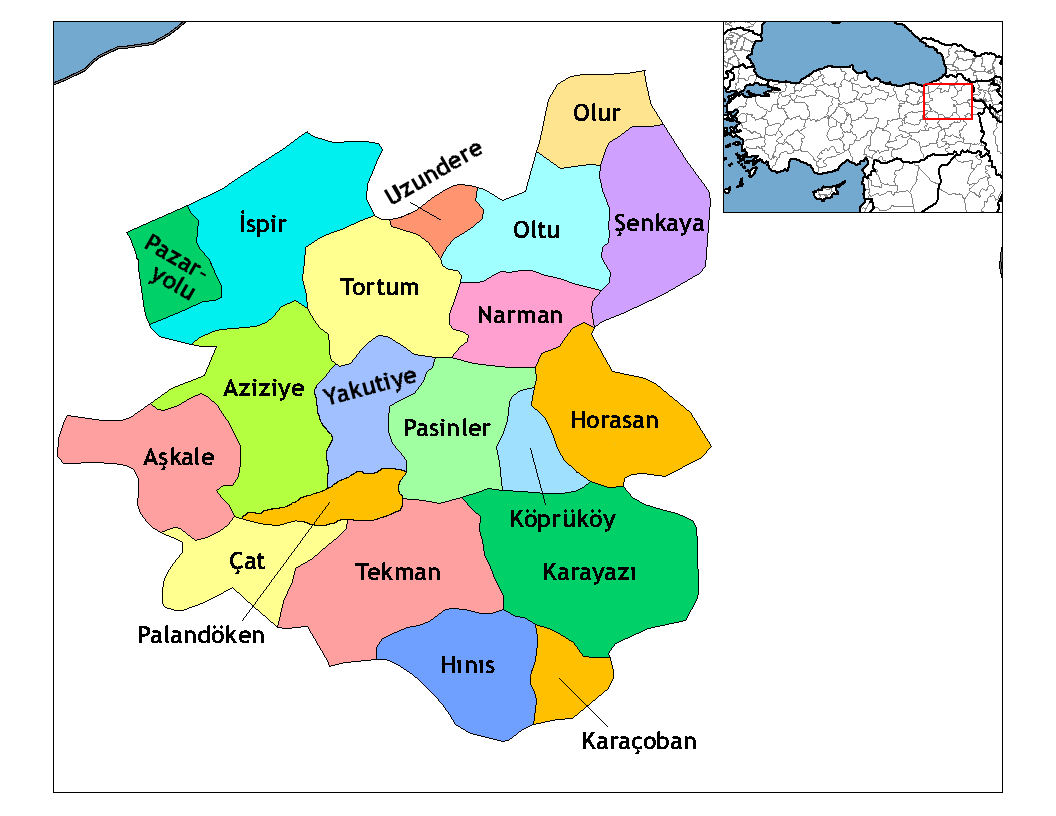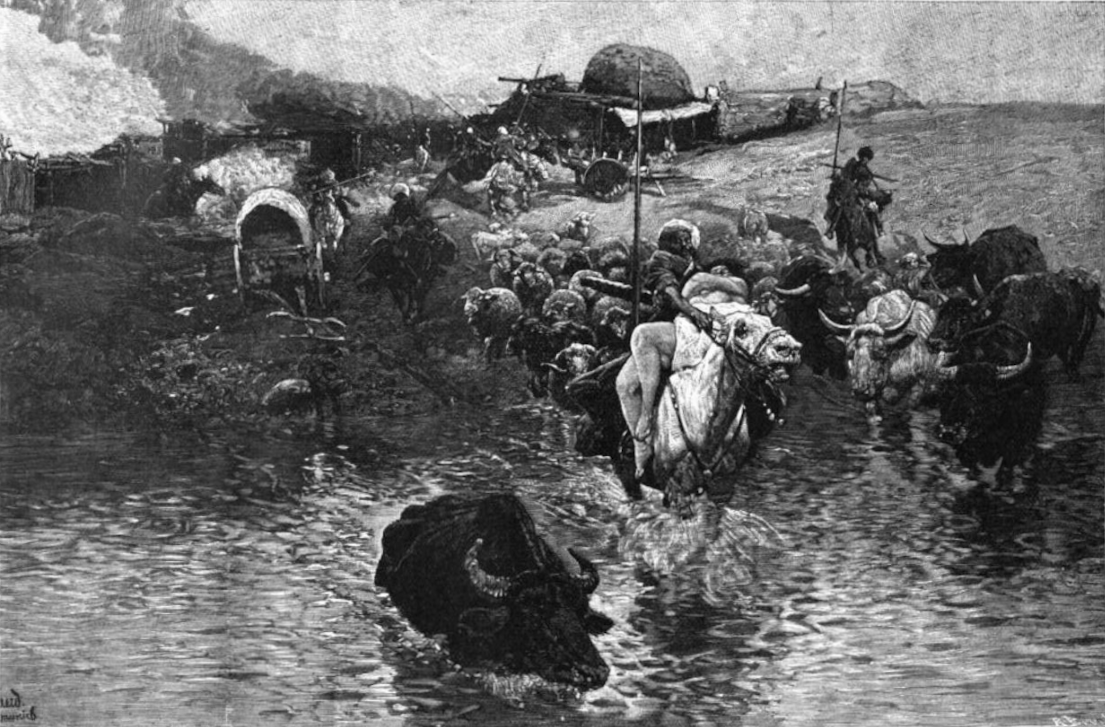|
Sırakonak, İspir
Sırakonak () is a neighbourhood in the municipality and district of İspir, Erzurum Province in Turkey. Its population is 251 (2022). It was formerly known as Hodiçor, Xodiçur and Xodorçur. The former names are derived from the Armenian name of the whole valley, the Khodorchur or Khotorjur. Before the Armenian genocide the settlement was the centre of a group of thirteen villages populated by Catholic Christian Armenian Armenian may refer to: * Something of, from, or related to Armenia, a country in the South Caucasus region of Eurasia * Armenians, the national people of Armenia, or people of Armenian descent ** Armenian diaspora, Armenian communities around the ...s The Armenians of Khodorchur spoke a distinct dialect of Armenian. It belonged to the Western dialects of Armenian, but had features characteristic of the Eastern dialects as well as features unique to itself or shared only with the neighbouring Armenian dialect of Homshetsma. The Khodorchur dialect is now exti ... [...More Info...] [...Related Items...] OR: [Wikipedia] [Google] [Baidu] |
İspir
İspir (, Sper; ka, სპერი, Speri) is a municipality and district of Erzurum Province, Turkey. Its area is 2,129 km2, and its population is 14,607 (2022). It is on the Çoruh River. The mayor is Ahmet Coşkun ( MHP). History İspir is known from the 3rd millennium BC. The ancient kingdom of Hayasa-Azzi (2nd millennium BC), which was the forerunner of Armenian statehood, was located in the upper reaches of the rivers Euphrates and Chorokh, and included Sper. The name Sper is thought by some to be derived from Saspers, or Sasperi, the name Sper with a Georgian prefix of place Sa-, which evolved into the term Iberian. The Saspers were mentioned by Xenophon;T. A. Sinclair, "Eastern Turkey an Architectural and Archaeological Survey", Volume 2, 1989, p272 In the 4th-3rd centuries BC Sper was organized into a province of the Iberian Kingdom as noted by Strabo. Alexander the Great sent one of his generals Menon to conquer Sper, but Menon and his forces were def ... [...More Info...] [...Related Items...] OR: [Wikipedia] [Google] [Baidu] |
Erzurum Province
Erzurum Province () is a province and metropolitan municipality in the Eastern Anatolia Region of Turkey. Its area is 25,006 km2, and its population is 749,754 (2022). The capital of the province is the city of Erzurum. It is the fourth largest province in all of Turkey. It is bordered by the provinces of Kars and Ağrı to the east, Muş and Bingöl to the south, Erzincan and Bayburt to the west, Rize and Artvin to the north and Ardahan to the northeast. The governor of the province is Mustafa Çiftçi, appointed in August 2023. The province has a Turkish majority. Geography The surface area of the province of Erzurum is the fourth biggest in Turkey. The majority of the province is elevated. Most plateaus are about above sea level, and the mountainous regions beyond the plateaus are and higher. Depression plains are located between the mountains and plateaus. The southern mountain ranges include the Palandöken Mountains (highest peak Büyük Ejder high) and t ... [...More Info...] [...Related Items...] OR: [Wikipedia] [Google] [Baidu] |
TÜİK
Turkish Statistical Institute (commonly known as TurkStat; or TÜİK) is the Turkish government agency commissioned with producing official statistics on Turkey, its population, resources, economy, society, and culture. It was founded in 1926 and headquartered in Ankara. Formerly named as the State Institute of Statistics (Devlet İstatistik Enstitüsü (DİE)), the institute was renamed as the Turkish Statistical Institute on November 18, 2005. See also * List of Turkish provinces by life expectancy References External linksOfficial website of the institute National statistical services Statistical Organizations established in 1926 Organizations based in Ankara {{Sci-org-stub ... [...More Info...] [...Related Items...] OR: [Wikipedia] [Google] [Baidu] |
Armenian Genocide
The Armenian genocide was the systematic destruction of the Armenians, Armenian people and identity in the Ottoman Empire during World War I. Spearheaded by the ruling Committee of Union and Progress (CUP), it was implemented primarily through the mass murder of around one million Armenians during death marches to the Syrian Desert and the Forced conversion, forced Islamization of others, primarily women and children. Before World War I, Armenians occupied a somewhat protected, but subordinate, place in Ottoman society. Large-scale massacres of Armenians had occurred Hamidian massacres, in the 1890s and Adana massacre, 1909. The Ottoman Empire suffered a series of military defeats and territorial losses—especially during the 1912–1913 Balkan Wars—leading to fear among CUP leaders that the Armenians would seek independence. During their invasion of Caucasus campaign, Russian and Persian campaign (World War I), Persian territory in 1914, Special Organization (Ottoman ... [...More Info...] [...Related Items...] OR: [Wikipedia] [Google] [Baidu] |
Armenian People
Armenians (, ) are an ethnic group indigenous to the Armenian highlands of West Asia.Robert Hewsen, Hewsen, Robert H. "The Geography of Armenia" in ''The Armenian People From Ancient to Modern Times Volume I: The Dynastic Periods: From Antiquity to the Fourteenth Century''. Richard G. Hovannisian (ed.) New York: St. Martin's Press, 1997, pp. 1–17 Armenians constitute the main demographic group in Armenia and constituted the main population of the breakaway Republic of Artsakh until their Flight of Nagorno-Karabakh Armenians, subsequent flight due to the 2023 Azerbaijani offensive in Nagorno-Karabakh, 2023 Azerbaijani offensive. There is a large Armenian diaspora, diaspora of around five million people of Armenian ancestry living outside the Republic of Armenia. The largest Armenian populations exist in Armenians in Russia, Russia, the Armenian Americans, United States, Armenians in France, France, Armenians in Georgia, Georgia, Iranian Armenians, Iran, Armenians in Germany, ... [...More Info...] [...Related Items...] OR: [Wikipedia] [Google] [Baidu] |
Western Armenian
Western Armenian ( ) is one of the two standardized forms of Modern Armenian, the other being Eastern Armenian. It is based mainly on the Istanbul Armenian dialect, as opposed to Eastern Armenian, which is mainly based on the Yerevan Armenian dialect. Until the early 20th century, various Western Armenian dialects were spoken in the Ottoman Empire, predominantly in the historically Armenian populated regions of Western Armenia. The dialectal varieties of Western Armenian currently in use include Homshetsi, spoken by the Hemshin peoples; the dialects of Armenians in Kessab, Latakia and Jisr al-Shughur in Syria, Anjar in Lebanon, and Istanbul and Vakıflı, in Turkey (part of the "Sueidia" dialect). The Sasun and Mush dialects are also spoken in modern-day Armenian villages such as Bazmaberd and Sasnashen. The Cilician dialect is also spoken in Cyprus, where it is taught in Armenian schools (Nareg), and is the first language of about 3,000 people of Armenian descent ... [...More Info...] [...Related Items...] OR: [Wikipedia] [Google] [Baidu] |
Eastern Armenian
Eastern Armenian () is one of the two standardized forms of Modern Armenian, the other being Western Armenian. The two standards form a pluricentric language. Eastern Armenian is spoken in Armenia, Russia, as well as Georgia, and by the Armenian community in Iran. Although the Eastern Armenian spoken by Armenians in Armenia and Iranian-Armenians are similar, there are pronunciation differences with different inflections. Armenians from Iran also have some words that are unique to them. Due to migrations of speakers from Armenia and Iran to the Armenian diaspora, the dialect is now very prominent in countries and regions where only Western Armenian was used. Eastern Armenian is based on the Yerevan dialect. Official status and recognition Eastern Armenian is, for the most part, mutually intelligible by educated or literate users of Western Armenian – and vice versa. Conversely, semi-literate or illiterate users of lower registers of either variety may have difficulty und ... [...More Info...] [...Related Items...] OR: [Wikipedia] [Google] [Baidu] |
Homshetsi Dialect
Homshetsi (; ) is an archaic Armenian dialect or a language spoken by the eastern and northern group of Hemshin peoples (''Hemşinli''), a people living in northeastern Turkey, Abkhazia, Russia, and Central Asia. It has some differences from Armenian spoken in Armenia. It was not a written language until 1995, when linguist Bert Vaux designed an orthographic system for it based on the Turkish alphabet; the Armenian alphabet was used by Christian immigrants from Hamshen (Northern Hamshenis)—who refer to the language as Homshetsma (Հոմշեցմա) in Russia and Abkhazia. Homshetsi is a spoken language amongst the Eastern Hemshinli, also known as the Hopa Hemshinli, who live in a small number of villages in Turkey's Artvin Province and Central Asia. The Western or Rize Hamsheni are a related, geographically separate group living in Rize Province, who spoke Homshetsi until sometime in the 19th century. They now speak only Turkish with many Homshetsi loanwords. A third group, th ... [...More Info...] [...Related Items...] OR: [Wikipedia] [Google] [Baidu] |


